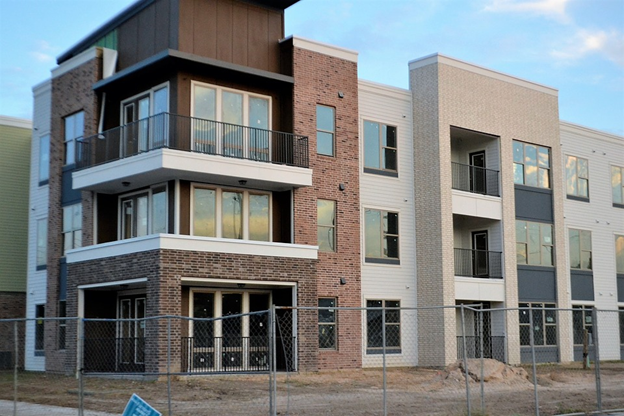All roofing endeavors have one primary goal, and that goal is to keep outside elements from getting inside the structure. This could be moisture, sunlight, pollution, dirt, or other contaminants that can damage the structure and reduce the integrity of the building.
All roofs have unique challenges to accomplish their primary goal along with simultaneously meeting other goals of efficiency, aesthetics, and budgets. However, low slope roofing challenges are very different from the challenges St. Charles, IL roofing companies face with high-pitched roofs.
Challenges with Low Slope Roofing
Reduced Drainage
Your low slope roofing in St. Charles, IL might be called a flat roof because of its generally flat appearance. This is why drainage is a challenge with low slope roofs and also why no roof should actually be flat.
When measured rise-over-run, the smallest slope a roof should ever have is ¼”-over-12”. This is considered to be enough pitch to prevent pooling as long as the correct materials are used and the roof is regularly cleaned of any debris that could collect moisture.
The drainage in a high-pitched roof will reduce the impact of any imperfections or damages the roof endures. This doesn’t mean that a high-pitched roof can sustain itself from long-term damage, but the low-pitched roof will suffer much more immediate damage should water be allowed to collect for any amount of time.
Improper Materials
Rubber or TPO is commonly used on roofs that are very low-sloped because it adheres well to the substrate and forms a waterproof seal. On low sloped roofs that are higher-pitched up to 3”-over-12”, metal may be used and is often preferred because of its durability. Traditional asphalt shingles should never be used on roof slopes lower than 3” -over- 12”.
If you think about the overlapping nature of shingles on an average- or high-sloped roof, it makes sense that the overlapping would not work if the shingles were not placed at a steep enough angle. In any case, the membranes involved in a low-sloped roof in St. Charles, IL are also integral to the ability to keep it dry.
Poor Workmanship
Lastly, one of the biggest challenges with low-slope roofing is making sure it is installed properly. This means the roofing company must be dutiful in its inspection of seams, t-joint patches, and membranes to ensure it is weatherproof.
Your low-slope roofing project in St. Charles, IL is likely to see multiple types of extreme weather, and poor workmanship will quickly rear its head and show itself in the form of leaks and damage. Not only is this a hassle to fix, but it can be costly both emotionally and financially.
Hire a Reputable Roofing Company for Your Low-Slope Roofing Project
The key to a successful low-slope roofing project for your St. Charles, IL building is to hire a reputable, experienced roofing company. They’ll understand the importance of material selection and workmanship, and they’ll have the experience necessary to get the job done correctly, so your low-slope roof will have an extended life.
Call us today at 847.587.0872 to learn how we can help you with your low-slope roofing project or other roofing needs.



